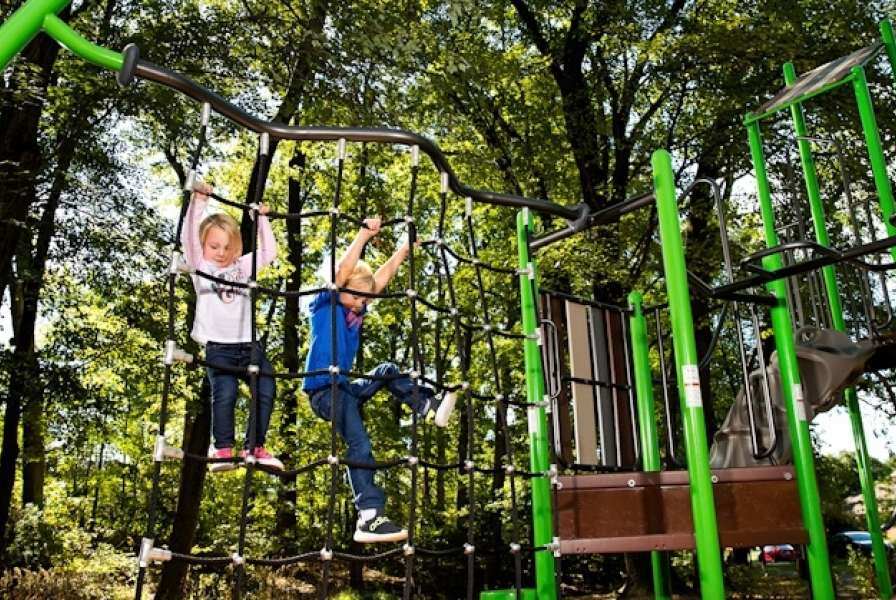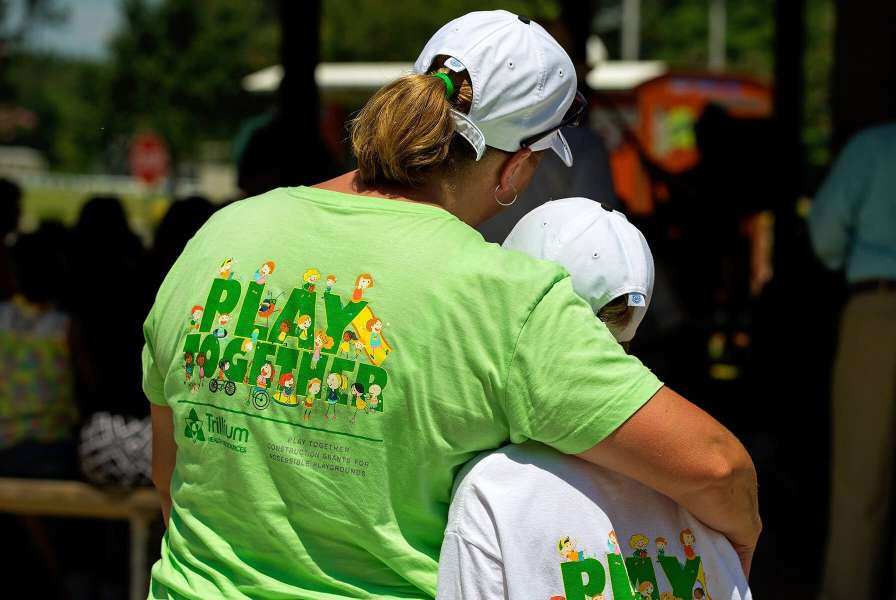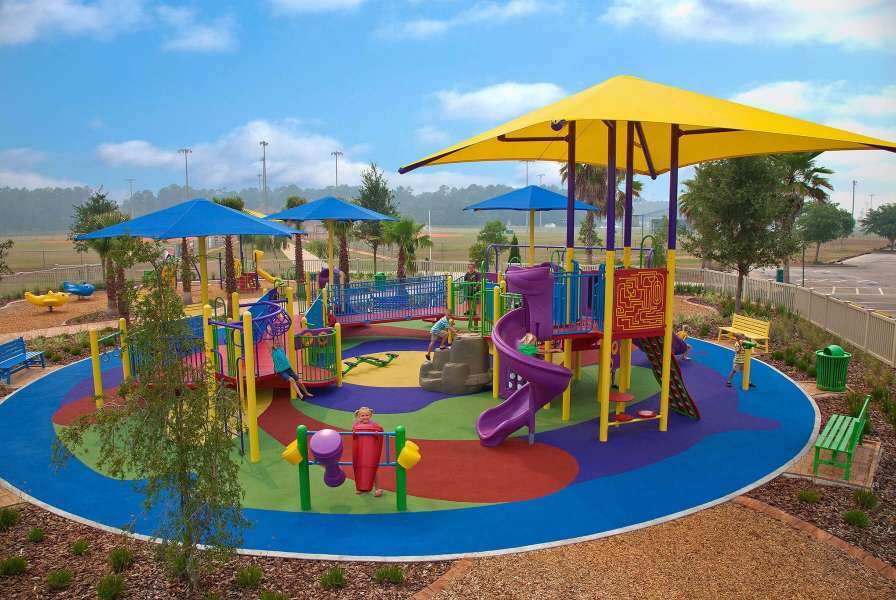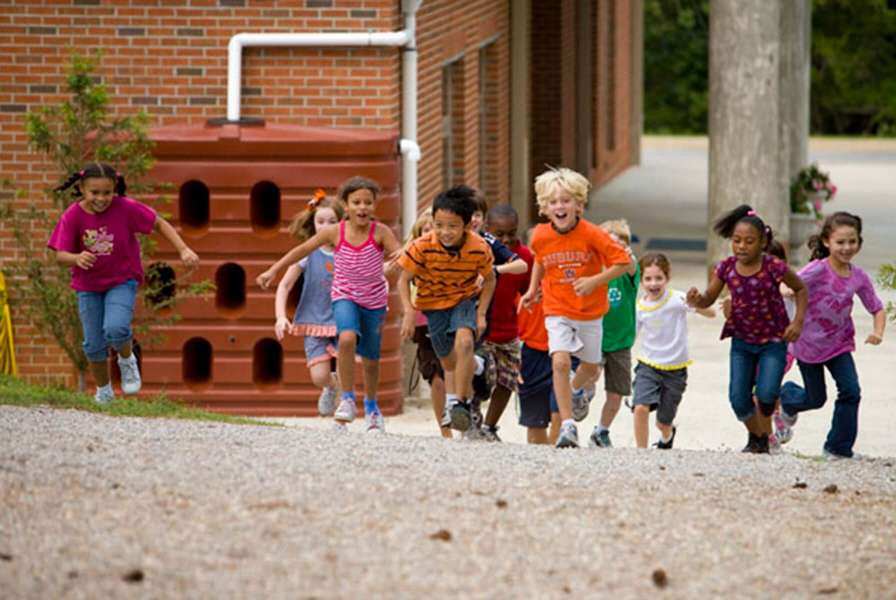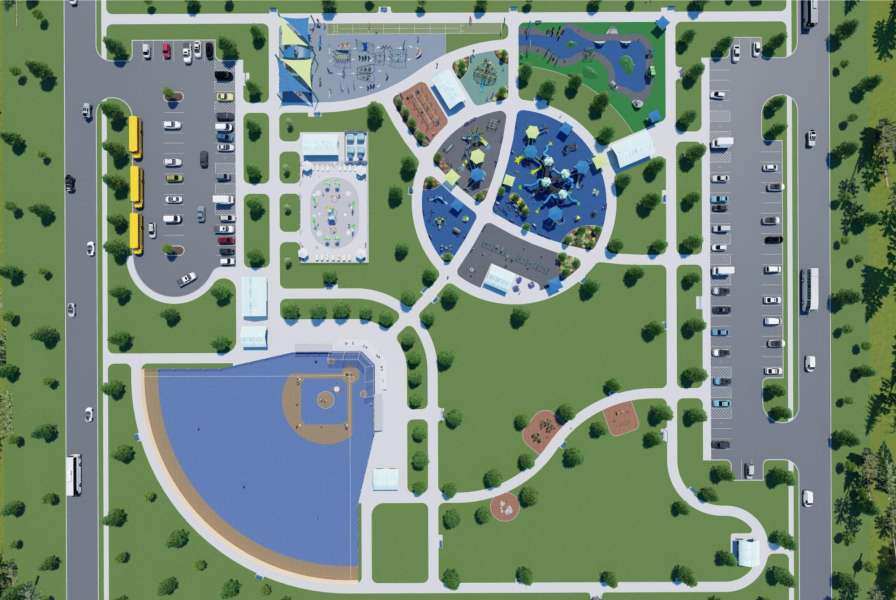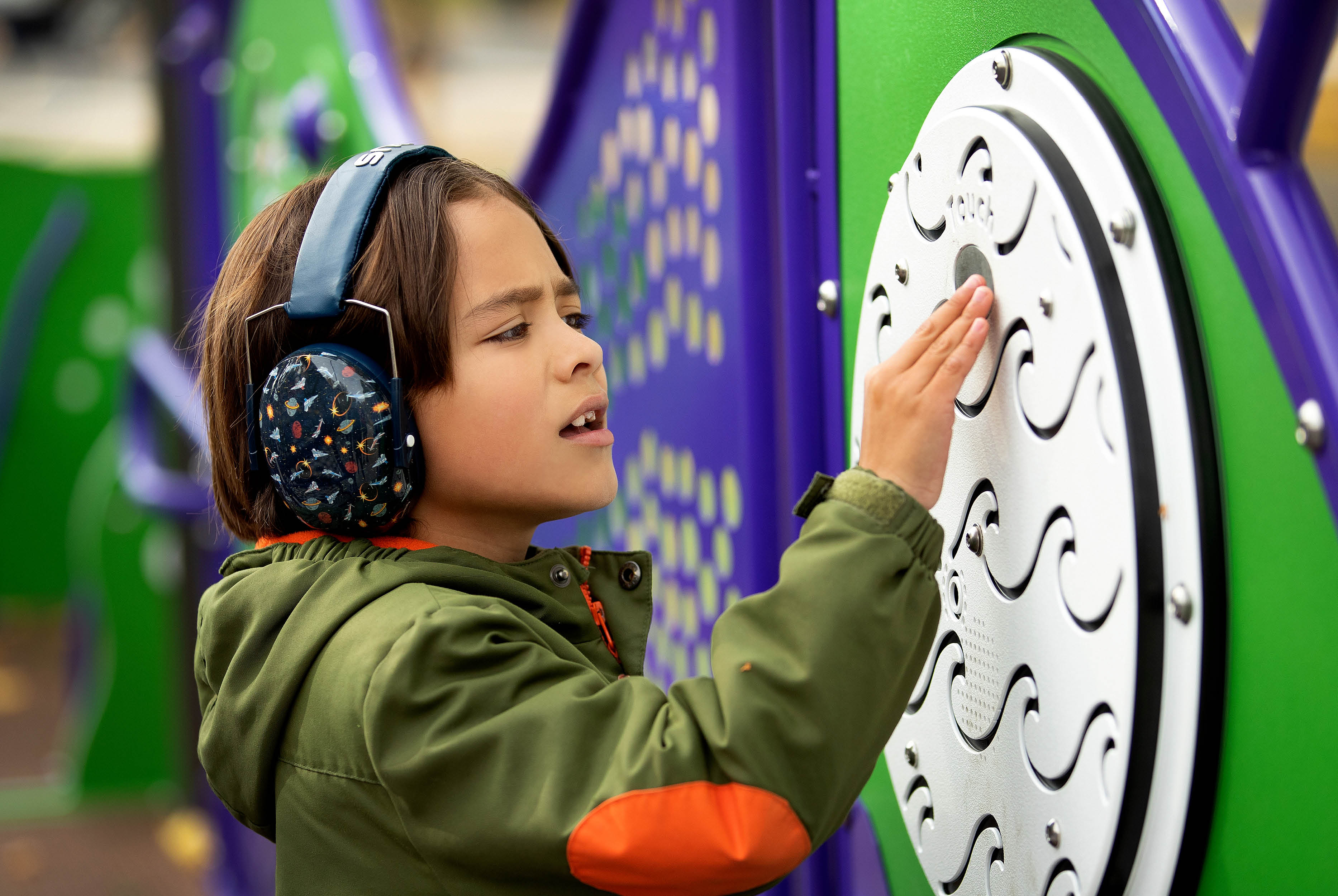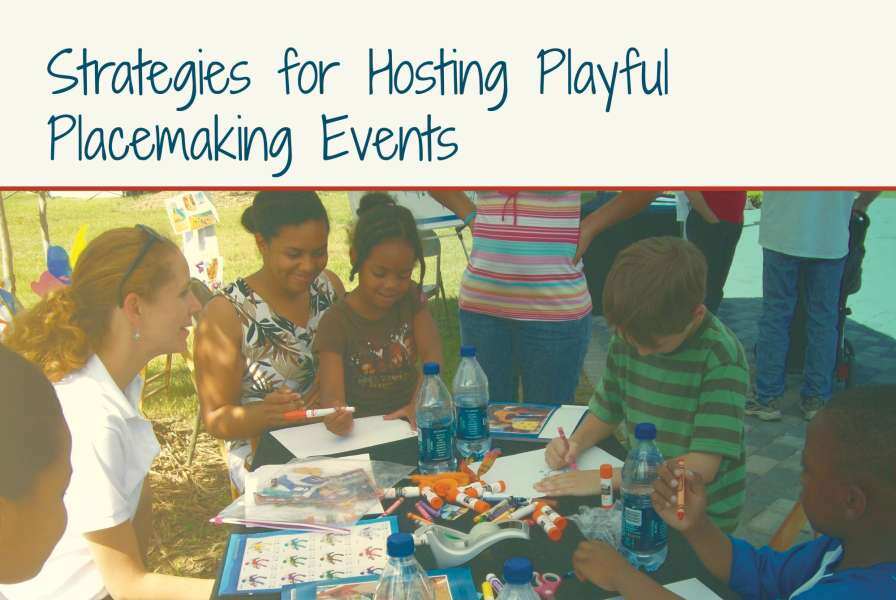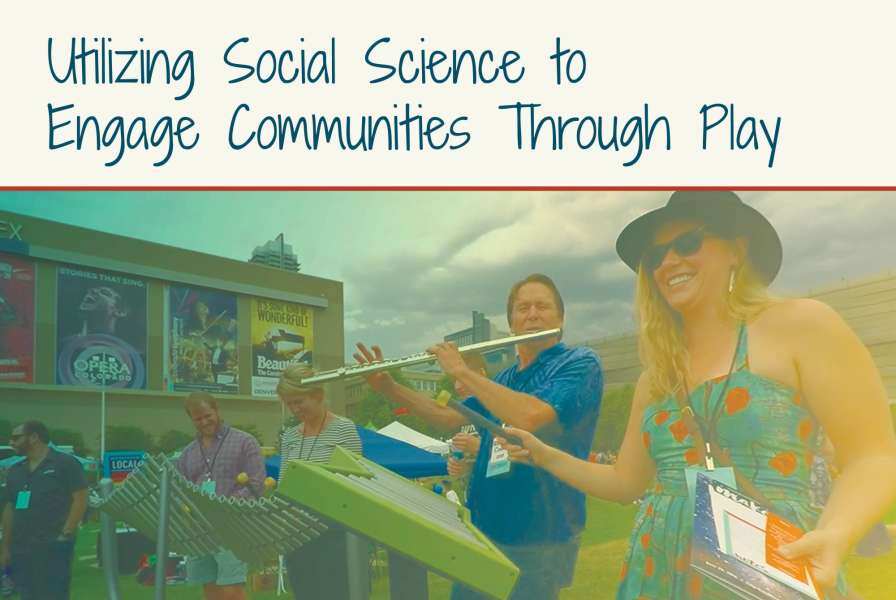Nature adds value to outdoor play spaces by enhancing their beauty, their play opportunities, and the ability to learn. Manufactured equipment, combined with natural elements, tells children that playgrounds are their special play spaces. The added comfort and attraction of nature also encourages adults to play and engage.
Here are a few ways to get started planning your nature play space:
Plan for your community
Research demonstrates that combining nature with equipment produces a space that is more attractive to a diverse group of people – no matter their age, cultural background, economic status, and level of ability or personal skill. Naturalized playgrounds can become social crossroads in the community.
Be sure to include opportunities for physical activity, shaded areas for social gatherings, and site amenities for the whole family to rest and enjoy.. Also consider ways to ensure the space is inclusive and usable for all by considering physical, communicative, social/emotional, sensory, and cognitive play opportunities.
Locate near site features and park utilities
In nature play settings, location is important for walking access, plant/tree placement, and drainage systems, it's all essential to the functional success of the playground. It should be reachable within walking distance via accessible routes or connecting trail systems to encourage the community to engage in nature play.
Along with a well-designed surface drainage system, parks should consider employing contemporary landscape engineering practice such as rain gardens and vegetated swales to accommodate storm water runoff.
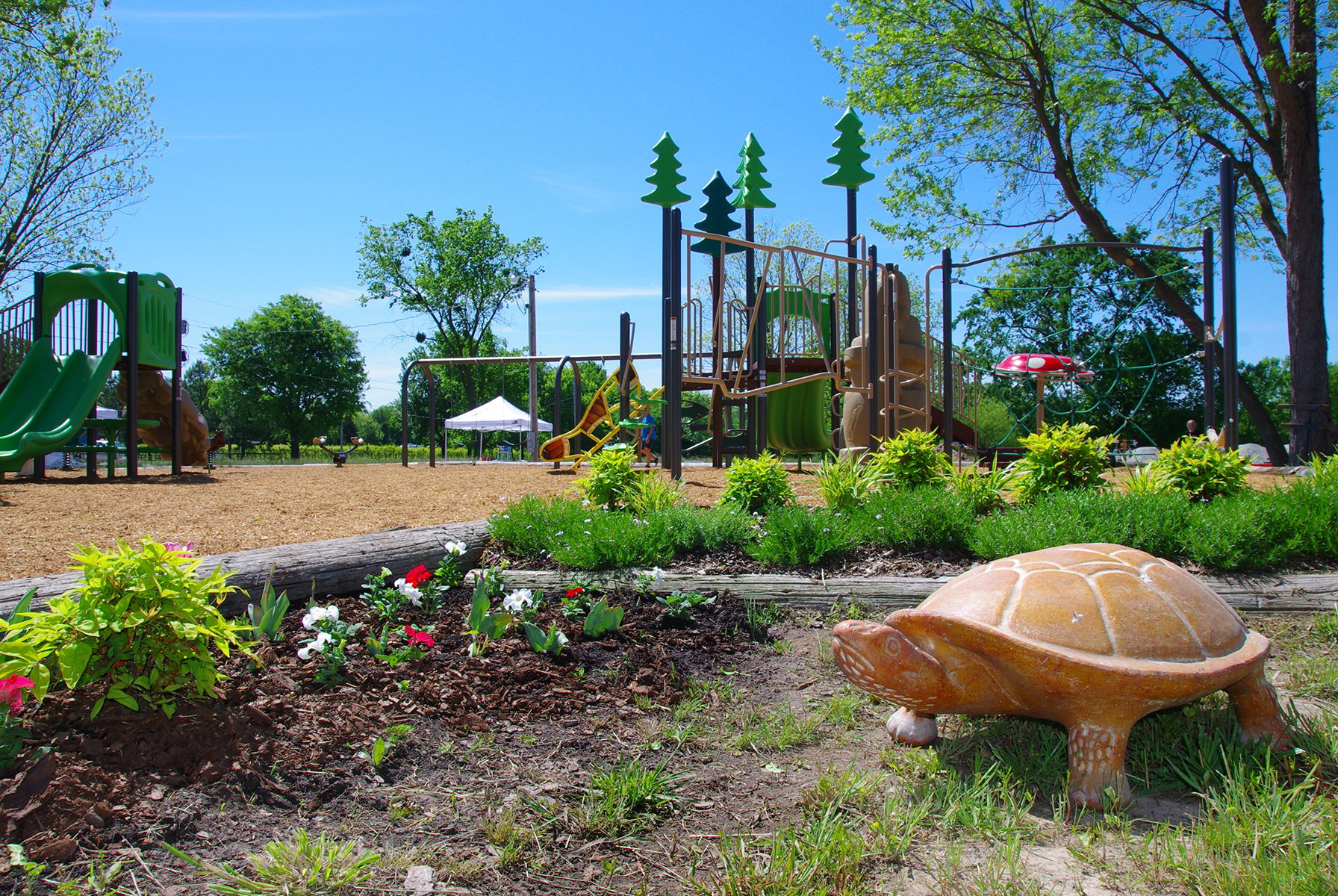
Topography: Provide variation like elevation changes to your play area as they encourage children to move. Topography can also help improve sightlines and create views to other areas the family can explore.
Vegetation: Mature trees are crucial site assets that add shade and beauty to the site making it attractive to more users. Conserve trees and other significant vegetation such as existing woodlands by seeking professional advice from a certified arborist, to determine health of existing trees, and a licensed landscape architect or contractor concerning appropriate construction methods near mature trees. Further information on spacing can be found in the NatureGrounds guidebook referenced later in this article.
Shade: Place manufactured playground equipment close to large, deciduous shade trees so that users are both protected from direct rays of the sun during hot summer months and exposed to warmth of the sun at other times of the year when the trees are not in leaf.
Make it welcoming
Entrances provide a welcome, while playground barriers offer a sense of security, provide organization to the play area, and create natural enclosures. Pathways function as the social connectors of the space directing users throughout the play, trail, and nature areas.
Consider connected, continuous, circular pathway layouts without dead ends, to facilitate running, chasing, and hide-and-seek games between play structures, thus increasing physical activity and adding active lifestyle benefits.
Define play settings to maximize active, social, and sensory play opportunities
Recognize settings that promote active play as the most important because they motivate moderate and vigorous physical activity and integrate them into the living landscape as part of the play experience. Research shows that a mix of the built environment and nature get children and families to higher use as they expend energy and reach moderate to vigorous levels of activity on the recognizable play components and encourage exploration, learning, loose part play, and wildlife observation in the natural elements.
Socio-dramatic play settings engage a wide age range of preschool and school-aged children, by providing stages and decks, that gives children the opportunity to gather and create spontaneous dramatic play episodes.
Hands-on water play and sand settings offer rich sensory play experiences and integrating them together can be molded to extend play value. With water in mind, remember to include drinking fountains to offer accessible places for hydration.
The creation of innovative play environments that integrate manufactured play equipment with the living landscape will be successful through the aligned energy of those on the front line working together to implement research-based best practice.
This information and more can be found in our best practice guideline: NatureGrounds®: Creating & Retrofitting Play Environments. The purpose of the program is to create a dramatic shift in the standard playground development paradigm by integrating nature, to not only benefit children’s play but to engage communities in working together to revalue the importance of children’s outdoor play and engagement with nature.
To learn more about nature play and our solutions, please visit www.playcore.com/resources/programs-into-practice/nature-play.
